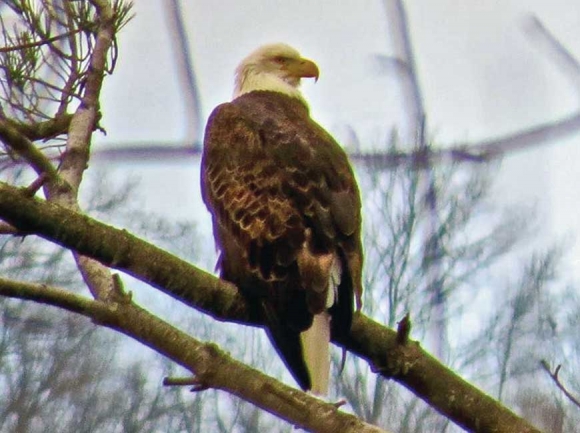So from these strictly non-scientific observations, it certainly looks like “our” Lake J eagles are — and have been — incubating. One eagle neighbor who watches through a spotting scope from her deck texted me yesterday (March 25) to say the eagle in the nest was very active — up and moving around but never left the nest.
As I mentioned in a recent column, the eagles were observed changing places on the nest Feb. 26. This was a good sign eggs were present, and if you add 35 days — normal incubation time — hatch day would be April 2. That means it has to be any day now and, of course, incubation could have begun before Feb. 26.
What eagle neighbors should be watching for now is parents bringing food to the nest, just like the wrens that hatched in the fern basket on your deck; feeding babies is an all-consuming task. You will most likely see this kind of activity before you spot any chicks because the nest is large and deep and it will be a while before the chicks are large enough to be spotted.
The real show will begin after the chicks hatch. It takes another 10 to 14 weeks after hatching before the chicks fledge and they grow quickly during this time. The youngsters are as large as adults by the time they fledge and there is a lot of activity at the nest — feeding, wing stretching, limb hopping, etc., before the babes take to the air for the first time. And even after they initially get airborne, the parents will still feed, so we have a lot to look forward to.
I applaud the Lake Junaluska community, the eagle neighbors and all interested eagle watchers for being discreet and respectful while observing the birds at the nest. It is still critical to give the birds their privacy and once the chicks start to grow they will be easily observable from your favorite site.
Related Items
I am thinking, if the pair fledges successfully this year it will only strengthen the site bond for the Lake J nest, perhaps making it a prime spot for an eagle cam next year?
(Don Hendershot is a naturalist and a writer who lives in Haywood County. He can be reached at This email address is being protected from spambots. You need JavaScript enabled to view it.)




